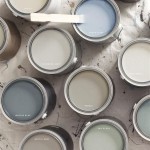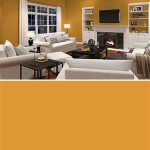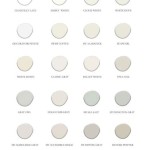Adding a Pop of Color to Your Home with a Paintbrush
Color has a profound impact on our lives and our surroundings, and incorporating it into our homes can bring joy, create ambiance, and transform the overall atmosphere. A fresh coat of paint can be the perfect solution for adding a pop of color and revitalizing your space.
However, choosing the right colors and incorporating them harmoniously can be a daunting task. Here are some essential aspects to consider when adding a pop of color to your home with a paintbrush:
1. Choosing the Right Colors
The colors you choose for your home should reflect your personal style, taste, and the overall ambiance you wish to create. Consider the following factors:
- Room Function: The purpose of the room should influence your color choices. For example, warm colors like red and orange are energizing and stimulating, while cool colors like blue and green are calming and relaxing.
- Natural Light: The amount of natural light in the room can affect the way colors appear. Bright rooms can handle bolder colors, while darker rooms may benefit from lighter shades.
- Existing Decor: Take into account the colors of your furniture, flooring, and other elements in the room to create a harmonious color scheme.
2. Creating an Accent Wall
An accent wall is a great way to add a bold pop of color to a room without overwhelming the entire space. Choose a wall that is the focal point of the room or that serves a specific purpose, such as the wall behind the bed or sofa.
The color you choose for the accent wall should complement the other colors in the room and create a visually interesting contrast. Consider using a contrasting shade or a bright and vibrant color.
3. Incorporating Color Accents
In addition to painting an accent wall, you can also incorporate color accents through smaller elements such as throw pillows, curtains, artwork, and rugs. This allows you to add pops of color without committing to a full room makeover.
Choose accents in colors that complement or contrast with the existing color scheme. For example, if your walls are painted in a neutral color, you could add pops of color through brightly colored cushions or a vibrant rug.
4. Using Color Theory
Color theory is a helpful tool for creating visually pleasing and harmonious color combinations. Here are some basic principles to keep in mind:
- Monochromatic: Using different shades and tints of the same color creates a cohesive and elegant look.
- Complementary: Colors opposite each other on the color wheel, such as blue and orange or red and green, create high-contrast and visually stimulating combinations.
- Analogous: Colors adjacent to each other on the color wheel, such as blue, blue-green, and green, create harmonious and calming color schemes.
5. Experiment and Have Fun
Adding a pop of color to your home should be an enjoyable and creative process. Don't be afraid to experiment with different colors and combinations. Use paint samples to test out different shades and see how they look in the actual space.
Remember that color is subjective, and what may look good to one person may not look good to another. Trust your own instincts and create a color scheme that you love and that reflects your personal style.
Paint Your Own Feature Wall And Add A Pop Of Color Banyan Bridges
Think Beyond Paint How To Add Color A Plain Room In Seattle Companyname
How To Add A Pop Of Color Your Cabin S Interior
21 Next Level Diy Ideas For How To Get Creative With Paint At Home
5 Elevated Ways To Add Color Your Living Room
Pin On Decorating Ideas For The Home
How To Make The Best Home Colour Selections B Vintage Style
5 Elevated Ways To Add Color Your Living Room
Quick Easy Paint Dipped Paintbrush Ornaments
Framed Paint Brush Art Blue I Style
Related Posts








